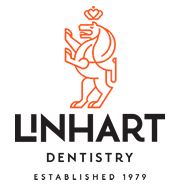The most typically recognized tooth whitening is at-home whitening with custom trays. These trays are generally fabricated by the dentist by using an exact replica of your teeth.
Custom Whitening Tray – PROS:
A custom tray is desirable over a generic tray in that it keeps the whitening gel exactly where it is wanted, on the teeth. Whitening gel can bleach and even burn the gums, so keeping it on the teeth only is very important.
Custom trays can be filled with either hydrogen peroxide (usually .5-1 hour use) or carbamide peroxide (usually overnight use) gels of varying percentages. These gels are less concentrated that the gels used by dentists in order to maintain the safety of the patient.
Tray whitening at home is a great way for just about anyone to whiten their teeth, and is also great as a follow up to in-office whitening to maintain the brighter shade.
Tooth Whitening – CONS:
The main disadvantage of tooth whitening is sensitivity. Often after whitening, pateints will experience transient sensitivity that ranges from mild to severe, hours to days. Dr. Jan Linhart’s PearlinBrite laser whitening is specially formulated to REDUCE sensitivity, however elimination of sensitivity cannot be assured.
How to Reduce Sensitivity:
There are ways, however, to moderate and reduce sensitivity following whitening. These include
1.) Brushing with a high fluoride/sensitivity toothpaste for a couple of weeks prior and after whitening (eg Sensodyne, Prevident 5000)
2.) Taking an OTC painkiller immediately following the procedure (eg Advil, Tylenol)
3.) Making sure to apply gel only to whites of teeth, and not exposed roots or gums
Stay tuned for part 3, at home OTC whitening products!
